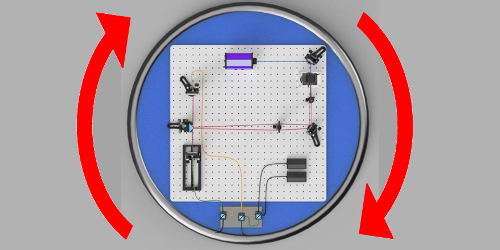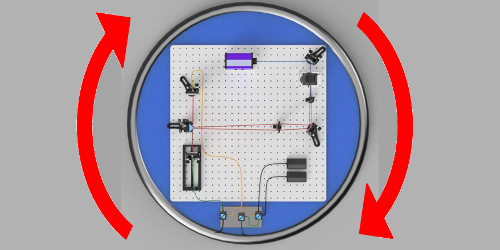Playing a Quantum “Oldie” on a Turntable
Are the laws of quantum physics the same in both accelerating and inertial reference frames? A new study seeks to answer this question by placing an entangled-photon experiment on a rotating table. The results confirm that, yes, the photons exhibit a quantum effect, called bunching, just as they do in a stationary system. No surprise there, but the authors argue that conducting a larger version of the experiment in orbit could also probe the overlap of quantum physics and gravity.
Currently, no theory satisfactorily unites quantum physics and general relativity—Einstein’s theory for gravity. However, the two are consistent under conditions of weak gravity or in modestly accelerating frames. Researchers have previously tested this consistency by observing, for example, quantum interference of massive particles in the presence of small gravitational gradients.
In their new experiment, Miles Padgett from the University of Glasgow, UK, and colleagues studied a quantum effect called Hong-Ou-Mandel (HOM) interference, in which entangled photons are sent to a pair of detectors via two paths: one photon goes clockwise through a coil of optical fiber; the other goes counterclockwise. When the photons reunite in a beam splitter, they bunch together and head toward one detector or the other. Nonentangled photon pairs have the option of splitting and setting off both detectors. The team rotated their experiment at up to 25 revolutions per minute. As expected, the rotation caused a small difference between each photon’s travel time, which affected the bunching signal at the detectors.
The authors propose that by repeating the experiment in orbit, with satellites relaying the photons in opposite directions around the Earth, the effect of gravity as well as rotation could be investigated.
This research is published in Physical Review Letters.
–Michael Schirber
Michael Schirber is a Corresponding Editor for Physics based in Lyon, France.





